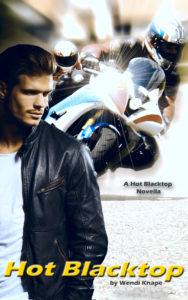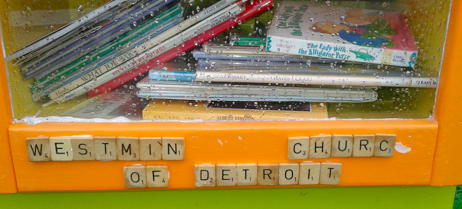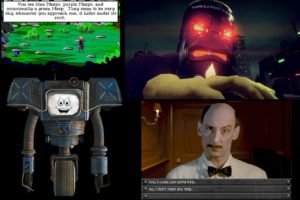I was administering vaccinations against cholera, black plague, and black fever as part of an annual active-duty deployment. It was a hot, July afternoon at Phelps Collins Air National Guard base west of Alpena, Michigan. Trained as an Operating Room Specialist in the United States Air Force, I was qualified to assist in major surgeries but was tired of giving shots to air-policemen, cooks, and pilots griping about worldwide deployment immunizations. Our 127th Tactical Reconnaissance Group needed world-wide disease protection and, for some reason, few guardsmen wanted major operations performed on them during a two-week summer camp.
Although our unit had never been called up, protection against cholera, black plague, and black fever might be less useful in an Alpena bar but might be a good idea in a remote mid-east desert village. After being on my feet all day, I was ready for dinner in the base chow-hall but I was the one last to leave, still awaiting my replacement. Without any other hospital personnel there, the Phelps Collins siren began wailing in the distance, signaling an emergency on the flight line.
Months earlier, between giving shots and helping with physical examinations, I had learned to drive the big blue hospital “deuce-and-a-quarter”, a truck-based military ambulance, so I ran outside to drive or ride if someone was already in the seat. But no one was there. I jumped in the driver’s seat, started the engine, flicked the military radio on, and pointed the vehicle toward the flight-line waiting for a doctor to appear. I wasn’t supposed to arrive on the tarmac without a doctor, but an airplane was in trouble and we had to have medical personnel there within a few minutes of the siren sounding.
After what seemed an eternity, Doc Cooper and our Senior Master Sergeant, Joe, burst through the infirmary door, bags and hats flying. They managed to jump in and I gunned the engine, dropped the clutch, and took off. Others were running to catch us but the only one that counted was Doc Cooper and they knew it. My feet danced on the pedals, power-shifting through the gears. With our siren screaming and red light flashing, base traffic dove for the side of the road.
“What’s happening?” Doc yelled, hanging onto the window sill with both hands. The engine roared as we skidded onto the last road toward the hangars and apron tarmac.
“I hope it’s not one of our 84’s” I yelled back. They both knew I meant our 127th TAC reconnaissance RF84F Thunderstreak single-seat airplanes. The 127th had lost one a few years before and a pilot had perished. We certainly didn’t need another incident.
I slammed the shift lever back and forth and the pine trees flew past, but I managed to stay on the blacktop, finally roaring toward the base tower. There were two “Mantis” fire rigs already moving at a good clip on the taxi-way. These huge, self-contained, fire-suppression machines were small houses on wheels with elevated foam-dispensers on their fronts like over-sized, pincer-wielding praying mantises. Two more huge fire engines emerged with lights blazing from a nearby hangar. The radio was mostly static until we heard an order from Phelps Collin’s tower.
“Ambulance, proceed north 200 yards and pull alongside the first fire engine. Await further orders.”
We rolled to a stop beside the first fire rig adorned with sweating, black-clad fire fighters clinging to its sides. There was nothing to see or out of the ordinary; no black clouds, roaring flames, or mounds of airplane wreckage. We took a collective deep breath and worried about what was going to happen next. A fireman near us said there might be an emergency landing about to happen. Curious onlookers drifted out of the dining hall hundreds of yards away. An Operations Officer trotted over.
“All of our jets have returned for the day, including the C47 Gooney Bird. But there’s a Cessna 310 about ten minutes out that’s in trouble. Someone flying from Ann Arbor to Mackinaw Island says the nose landing gear light won’t indicate whether it’s up or down. We’re the closest airstrip with equipment to handle something like this, so he’s thinking of setting it down on the grass beside the concrete runway gear up. If he changes his mind and tries to land on the concrete, he’ll be a sliding fire-ball in no time. Stick around. If he doesn’t get it right, you’ll have to pick up what’s left.”
Joe worried for us. “You know, landing a prop airplane gear up on grass or concrete is a last resort for any pilot. He can’t eject, and it’s doubtful he has a parachute or could bail out anyway. The grass is bumpy on both sides of the runway. He’ll have to cut power on both engines in the last seconds before the belly hits the grass and hope the propellers stop level with the wings. If either one isn’t, it’ll catch on the ground and spin him into a flaming, 100-mile-an hour funeral pyre.”
We stared at a cloudless blue sky, the air-base siren dying away, only increasing the tension. Everyone craned skyward searching for a 310 Cessna. Doc Cooper suddenly sat upright, concerned. “Forget propellers. Assuming he’ll try gear up, if one of the three wheels only partially deploys, it’ll snag and the plane will cart-wheel the length of the runway. Did anyone say whether there are passengers? You know, I don’t think he can dump excessive fuel in flight.” He paused. “We may not be set up to handle this from a medical stand point.”
Everyone was wishing they were somewhere else and not in a catastrophe in the making. The moment the Cessna touched grass, gear up without power, it would be an out-of-control, 2-1/2 ton aluminum beer can, filled with high-octane aviation fuel. At that point, pilot and passengers would be in a thrill ride and in even greater trouble if a fuel line ripped off or a gas tank split because fire rigs need time to arrive at the scene.
A tiny dot appeared in the distance and an airplane came into view to begin circling the field a mile out. Base tower and pilot discussed alternatives until the sleek twin-engine Cessna suddenly altered its path, lining up with the main concrete runway. Joe squinted, commenting, “Look, he’s coming in low and slow for a trial pass, testing the wind and low air speed handling.”
The pilot flew the plane slowly, much closer to ground than normal, landing gear up, checking grass conditions and undulations on our side of the main runway. We were all quiet, fascinated by the inevitable. Doc Cooper fingered his medical kit. I wondered whether we would need tourniquets, compresses, and splints. But we didn’t have oxygen, back braces, or even body-bags. How would we handle internal bleeding, closed head-wounds, open arteries, much less horrible burns on site? Alpena’s hospital and Oscoda’s Wurtsmith Air Base were a long way off.
The Cessna circled a last time before lining up with the grass next to the concrete runway, main landing gear and nose gear retracted. So it would be grass. With minimum power, skimming grass-height at 100 mph, the pilot shut off both engines and the propellers stopped safely horizontally with the plane sinking to earth. Out of its element, the 310 was no longer a flying machine but an uncontrollable sliding machine ill-suited for its new job. Rudder and tail surfaces no longer effective, it slid past us into the distance in a haze of dust and grass.
Before it came to a graceful stop a quarter-mile away, I gunned the ambulance engine, following the fire rigs at a safe distance. Nothing seemed to have flown off the airplane or broken apart and no fire balls erupted from split fuel lines or tanks. In the distance, the tiny figure of a pilot opened the hatch, clambered out, and sat on the wing waiting for our emergency vehicles. There didn’t seem to be any passengers.
It all ended quickly. The praying mantises arrived and crouched, ready to unleash their enormous foam cannons at the first sign of fire, but nothing happened except the plane sat smoking and tinkling from cooling metal. Doc Cooper clambered out and performed a brief examination of the pilot, whose only injury seemed to be hurt feelings. The Cessna sat in the grass at the end of runway like a discarded child’s toy.
I needed a drink, but the Phelps Collins enlisted men’s bar didn’t open for hours.


